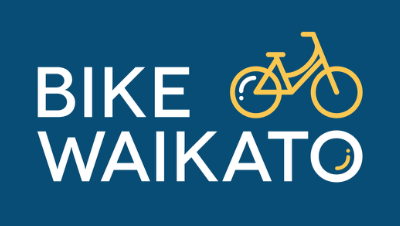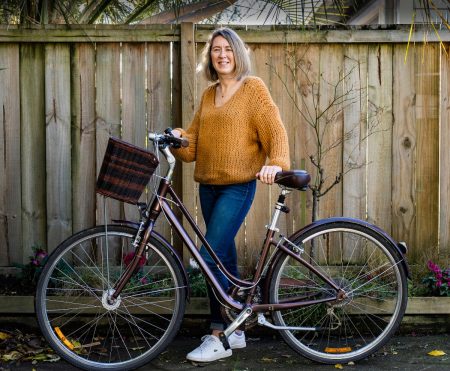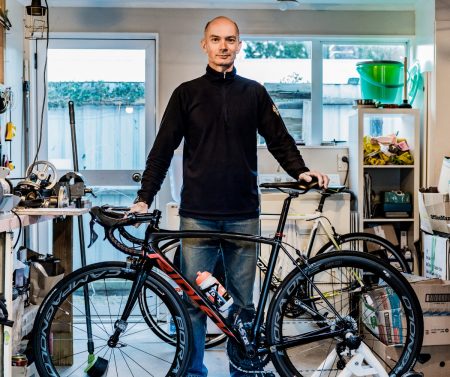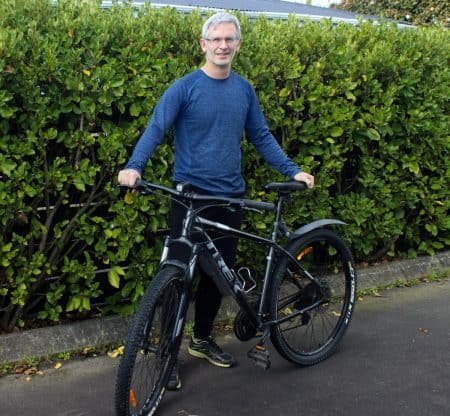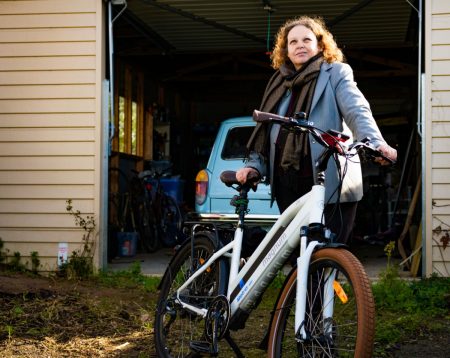2022 Candidate Responses – Waikato Regional Council
This is the third post in our series where we are publishing the answers from candidates for the 2022 local elections who provided us with responses to active and sustainable transport questions.
Working out who to vote for in the 2022 local elections can be a tough choice when it is hard to tell what values candidates are bringing to the table. Often we want to vote for candidates who understand the issues we face and can speak for our needs when it comes to investment, especially in transport.
At the beginning of September Bike Waikato sent out questions, focussed on sustainable and active transport, to candidates in three main areas to provide their views on funding and improvements for alternative modes of transport. We contacted candidates in Hamilton City, Waikato Region Hamilton Ward and Waipa District.
We hope this helps you make some informed decisions when you come to filling out your voting papers.
Angela Strange – Hamilton Constituency
Question 1: What modes of active and public transport do you use, and for what types of trips?
Walking, running with my daughter to school, then onto catch the bus to work.
E-biking to work. Cycling with children for leisure and exercise.
Bus for shopping and sport practices for children.
Te Huia train for work trips to Auckland.
My children catch the public bus for school travel, alongside their biking.
Question 2: What are your ideas to make it safer for people on bikes to ride in our towns and cities, particularly around schools?
Lower speed limits around schools – currently 40km around schools, this needs to be lowered to 30km, and have lower speed neighbourhoods in adjacent streets, with safe crossing points for children all across Hamilton. Rural schools – we have advocated for lower speeds around rural schools to Waka Kotahi and the needed law changes.
Safer, separated cycleways that are connected within towns and cities and between them as well. Cycle signals for traffic lights – just like cars trigger the lights to change, bikes too need to send a signal to the traffic lights to speed up the commute, and have the option to cross before traffic, or with them, rather than waiting for a very long time.
Question 3: What is your position on reallocating road space (either on-street parking or traffic lanes) towards space for people on bikes?
I agree with the overall vision of safe and connected – separated cycleways, with safe crossing points. If some on-street parking is need for this, then that can be worked through when you look at the whole corridor. PT priority is needed too, otherwise buses get caught in the same traffic as everyone else and there is no obvious advantage to catching the bus.
Question 4: Where do you think Council should focus its education initiatives for transport and road safety?
I have advocated for the Waikato Regional Council and Hamilton City Council to continue with Road Safety education, alongside a new Enviro-school education programme that address mode-shift and climate change. The HCC bikes programme they deliver in schools is valuable for our year 5/6 students. The WRC Ruben safety bear is really effective for early childhood and primary engagement as well as the Maori programme that is delivered too. Travel planning staff working directly with schools will address local issues to do with children walking, scootering and biking to school as well as PT routes and times that work for school timetables. Parking issues around schools continues to be a problem, and needs education and changes to keep everyone safe. Enforcement is needed when parking breaks rules and is dangerous. WRC has also worked in with schools and we run school assist bus services to meet the increased demand at peak times.
Question 5: Do you think Council should spend more, less or about the same on cycling infrastructure as proposed in the 2021-31 Long Term Plan? Explain your answer.
HCC needs to invest more in order to achieve a connected network that is safe for all users. The Eastern pathways corridor which has safe and separated cycleways alongside PT priority is needed to achieve real change and give people options for their journeys. This alongside the University link will ensure the Eastern side of the city is well served by cycleways. The western rail trail, is a great start on the west side, but more could be done here. Safe and secure bike-parking infrastructure needs to be thought about too, if we want people to bike more. All new development areas need to factor in multi-modal transport considerations from the start, and not be an after thought.
Jennifer Nickel – Hamilton Constituency
Question 1: What modes of active and public transport do you use, and for what types of trips?
I love walking and cycling around the Te Awa cycleway in particular. As I live on a lifestyle block just north of Hamilton with no bus stop nearby I use my car to get into Hamilton but anytime I’m heading to Auckland I’m always keen to take Te Huia wherever possible – it was great for getting to Auckland airport last time with their electric bus connection.
Question 2: What are your ideas to make it safer for people on bikes to ride in our towns and cities, particularly around schools?
While the regional council doesn’t have direct controls over cycleways, I want more fully separated cycleways that are off the road entirely to get into and around Hamilton (e.g. Te Awa, western rail trail-type), and when they are on-road that they are separated with physical barriers and connected up in long logical sequences that go past popular places like schools, malls, etc. I also advocate for great urban design (new or retrofits) and safer speed limits in neighbourhoods in particular.
Question 3: What is your position on reallocating road space (either on-street parking or traffic lanes) towards space for people on bikes?
While regional council doesn’t have direct controls over reallocating road space, I believe there are many case-by-case examples where road reallocation would make sense to provide safe walking, cycling and bus-priority lanes. I’d encourage City Councillors to explore that in depth.
Question 4: Where do you think Council should focus its education initiatives for transport and road safety?
On health and safety co-benefits, because that interests lots of people. Air quality, exercise, more cyclists = less cars, etc.
Question 5: Do you think Council should spend more, less or about the same on cycling infrastructure as proposed in the 2021-31 Long Term Plan? Explain your answer.
It must increase (and get plenty of central government funding too) so cycling becomes a preferable activity to taking private vehicles. This is good for our safety, air quality, health, and for reducing carbon emissions from petrol/diesel use.
Bruce Clarkson – Hamilton Constituency
Question 1: What modes of active and public transport do you use, and for what types of trips?
I use a private motorcar apart from regular running, tramping and rare recreational biking. I use the car for travel to work and long distance travel for outdoor activities and to connect with family.
Question 2: What are your ideas to make it safer for people on bikes to ride in our towns and cities, particularly around schools?
I support the city-wide biking network advocated by Sarah Thompson and suggested a review of dangerous roundabouts and intersections in my submission to the Policy.nz candidate survey. I am not an expert on this topic and rely on evidence from those who are.
Question 3: What is your position on reallocating road space (either on-street parking or traffic lanes) towards space for people on bikes?
Fully supportive of giving more space to ensure safe space for bike use.
Question 4: Where do you think Council should focus its education initiatives for transport and road safety?
For education on increasing the use of public transport; For road safety uncertain in the absence of expert advice.
Question 5: Do you think Council should spend more, less or about the same on cycling infrastructure as proposed in the 2021-31 Long Term Plan? Explain your answer.
My focus in standing for regional council is sustainability and environmental protection and while I recognize the contribution cycling makes I am not an expert on this matter. Given that, I would say about the same unless colleagues or council staff provide me with evidence to justify a change from the current allocation.
Warren Maher – Thames-Coromandel Constituency
Question 1: What modes of active and public transport do you use, and for what types of trips?
I use a bicycle for recreation and fitness, we have no public transport in Tairua, I generally use Uber if travelling in the city.
Question 2: What are your ideas to make it safer for people on bikes to ride in our towns and cities, particularly around schools?
Cycle lanes around cities and towns help with safety, I also think the conditions of the sides of many of our roads need major improvement to allow cyclists to keep as far to the left as possible.
Question 3: What is your position on reallocating road space (either on-street parking or traffic lanes) towards space for people on bikes?
I think it would need a site specific decision at any location, overall if there is a demand due to increased cycle use as a Councilor it is something I would consider.
Question 4: Where do you think Council should focus its education initiatives for transport and road safety?
Waikato Regional Council needs to focus its education initiatives for transport and road safety pretty much where they are. The Ruban the Road Safety Bear is a great kids program to teach kids safety around roads and in cars and encouraging safe helmet and bike use. Also their programs Road to Zero and Reduce the Risk involving partnership with NZ Transport, ACC, NZ Police and local councils show leadership and direction in a responsibility to improve road safety.
Question 5: Do you think Council should spend more, less or about the same on cycling infrastructure as proposed in the 2021-31 Long Term Plan? Explain your answer.
I think Waikato Regional Council should spend about the same on cycling infrastructure as proposed to support existing projects to see them through to completion, such as the Raglan Town 2 Surf cycle path, but also support the development of new trails/cycle ways along with financial input from District Councils and communities, all who benefit from increased cycle tourism both international and domestic . I need to research WRC’s total financial commitment to cycling infrastructure and the possibility to increase budget.
Dennis Tegg – Thames-Coromandel Constituency
Question 1: What modes of active and public transport do you use, and for what types of trips?
Occasional e-bike and bus trips to access services and shop
Question 2: What are your ideas to make it safer for people on bikes to ride in our towns and cities, particularly around schools?
Physically separate bike lanes from vehicle traffic. Adopt successful strategies from Europe and elsewhere.
Question 3: What is your position on reallocating road space (either on-street parking or traffic lanes) towards space for people on bikes?
This is essential to ensure the safety of cyclists and to help achieve the required mode shift to meet our obligation to reduce emissions.
Question 4: Where do you think Council should focus its education initiatives for transport and road safety?
Through social media but also exert pressure on central government to have major media campaigns to promote active modes of transport
Question 5: Do you think Council should spend more, less or about the same on cycling infrastructure as proposed in the 2021-31 Long Term Plan? Explain your answer.
Regional Council must show leadership by insisting that its Regional Land Transport Plan devotes a significantly greater proportion of its 10 year budget to active transport modes. See – https://www.stuff.co.nz/national/125558485/waikato-transport-policy-passes-but-councillor-labels-it-a-disgrace
Aranu Adams – Waihou Constituency
Question 1: What modes of active and public transport do you use, and for what types of trips?
I don’t at this time due to being rural based and supporting a disabled parent.
Question 2: What are your ideas to make it safer for people on bikes to ride in our towns and cities, particularly around schools?
Providing barriers of sorts for cycle lanes around schools. Raised humps perhaps.
Question 3: What is your position on reallocating road space (either on-street parking or traffic lanes) towards space for people on bikes?
I support the reallocation of space where community demands calls for such changes.
Question 4: Where do you think Council should focus its education initiatives for transport and road safety?
Environschools could focus on active and public transport use in urban areas to direct the future generations towards more shift and continued programmes like Reuben focussing on rural active transport including biking to school where safe.
Question 5: Do you think Council should spend more, less or about the same on cycling infrastructure as proposed in the 2021-31 Long Term Plan? Explain your answer.
About the same. The Regional Council doesn’t quite focus on cycling as much as most of that infrastructure is local council decisions but investment should be made from the regional council to continue to support and encourage mode shifts of all types.
Fred Lichtwark – Waikato Constituency
Question 1: What modes of active and public transport do you use, and for what types of trips?
I was knocked off a motorcycle by a drunk driver put in hospital for 11 months I can no longer ride a bike .
Question 2: What are your ideas to make it safer for people on bikes to ride in our towns and cities, particularly around schools?
In the short term traffic around schools need to be low speeds areas / bike lanes petitioned off with plastic bollards along roads and bikes on shared footpaths that are wide enough that have clearly marked lanes for both bikes and foot traffic .
Question 3: What is your position on reallocating road space (either on-street parking or traffic lanes) towards space for people on bikes?
I agree that should be seriously considered . But not a Regional Council responsibility although submissions to City and Territorial Councils by Waikato Regional council to promote my bike use by doing this to help reduce Co2 and encourage a healthier community and of course keeping bike riders safer .
Question 4: Where do you think Council should focus its education initiatives for transport and road safety?
In schools and at the border.
Question 5: Do you think Council should spend more, less or about the same on cycling infrastructure as proposed in the 2021-31 Long Term Plan? Explain your answer.
Waikato Regional Council does rate for cycling infrastructure , but I think we should be a strong advocate for supporting more spend on cycling infrastructure.
Noel Smith – Waikato Constituency
Question 1: What modes of active and public transport do you use, and for what types of trips?
I reside approximately 5km from any public transport so am unable to use public transport on a daily or even irregular basis. However when I travel to other cities in NZ I use public transport, usually buses or trains.
Question 2: What are your ideas to make it safer for people on bikes to ride in our towns and cities, particularly around schools?
I support having either dedicated cycle lanes or shared cycle lanes/paths/footpaths and where appropriate having wider footpaths that can be enjoyed by both cyclists and pedestrians.
Question 3: What is your position on reallocating road space (either on-street parking or traffic lanes) towards space for people on bikes?
I don’t have a problem with reallocating street space for bike its not that simple. Where roads are wide enough there is no reason why such a proposal should not be considered. However recent planning rules, as directed by Government, have allowed narrower streets and new dwellings do not have to provide for off street parking. Thus many of our urban centres will have more vehicles seeking limited spaces on roadsides. This issue has merit however it will be a minefield to progress under current planning standards.
Question 4: Where do you think Council should focus its education initiatives for transport and road safety?
The Regional Council holds the mandate as the body responsible for regional transport, particularly public transport. The City and District Councils are responsible for putting in roading infrastructure in conjunction with the NZTA (Waka Kotahi). I see the Regional Council as the organisation that links neighbouring Councils through the Regional Transport Committee. Thus I see the role of Regional Council in the safety space as a supporter of the NZTA and local council initiatives.
Question 5: Do you think Council should spend more, less or about the same on cycling infrastructure as proposed in the 2021-31 Long Term Plan? Explain your answer.
The Waikato Regional Council does not have funding in the LTP for cycling infrastructure. However I understand WRC and other councils are working together to review the current funding of public transport options and that will be considered in the next LTP. I do not see that WRC should provide funding for cycling infrastructure as that is the responsibility of the District and City Councils.
Stu Kneebone – Waipa-King Country Constituency
Question 1: What modes of active and public transport do you use, and for what types of trips?
I bike approx 3 times/week for fun and fitness. Probably average 140km/week over summer, sometimes more, depending on work commitments. Sometimes do a bit of grocery shopping on the bike in the summer. Sometimes bike to work in the summer. I have a Busit card, and sometimes use the bus, but living rurally 12km from Cambridge I still have to drive into town first to catch the bus, so it’s not part of my regular transport mode. As the service improves, I expect to use it more.
Question 2: What are your ideas to make it safer for people on bikes to ride in our towns and cities, particularly around schools?
Separated cycleways are obviously ideal, and Waipa DC where I live are doing a good job of establishing these. However there is obviously a cost involved, so in the interim I think we need to simply lower motor vehicle speed limits in areas that are regularly used by cyclists, particularly those routes used by school children. The only motorists that complain are those who either don’t cycle themselves, or don’t have kids or grandkids out on bikes in amongst the traffic.
Question 3: What is your position on reallocating road space (either on-street parking or traffic lanes) towards space for people on bikes?
I think this is something we have to do. Unfortunately there will always be those who don’t want to walk a bit further from their carpark who will make a lot of noise, but the reality is that we can’t simply keep putting more cars into urban centres, and expect to be able to drive ourselves to the door of the shop we need to get to. The advent of E bikes has driven a huge shift in attitudes, as they have enabled a much broader spectrum of the population to use bikes for transport which in turn justifies both local and central government investing more ratepayer dollars into dedicated cycle lanes. I acknowledge that not all Councils have got the recipe right in terms of how best to retro fit cycling space into existing roads, but retrofitting cycle lanes into towns and cities that were never designed for the sorts of traffic volumes we now have was never going to be easy. I think we need to be bold and demonstrate leadership, and try different things. I have no doubt that the next generation will thank us for having the foresight to recognise that the current situation is simply not fit for purpose going forward, and the days of driving our cars everywhere in busy urban centres are numbered.
Question 4: Where do you think Council should focus its education initiatives for transport and road safety?
I would like to see a lot more encouragement and associated support for school children to bike to school. A significant amount of traffic congestion is generated by parents driving their kids to school, and this is far from ideal on a number of fronts. It becomes painfully obvious how bad this is during school holidays, as the traffic flows much better. In terms of education, I suspect the kids themselves are probably fine, as there are good programmes underway. Its the parents and the motorists that need education.
While I’ve seen a dramatic positive shift in attitudes of motor vehicle drivers towards cyclists where I live in the past 5 years, I still think the biggest issue is ignorant motor vehicle drivers who have never ridden a bike and so simply don’t appreciate how vulnerable cyclists are. I’m no expert, but we somehow need to incentivise motor car drivers to treat all cyclists as if they were their own kids out on the bike.
Question 5: Do you think Council should spend more, less or about the same on cycling infrastructure as proposed in the 2021-31 Long Term Plan? Explain your answer.
I’m not familiar with Councils (I’m guessing you are referring to Hamilton?) LTP budget for cycling infrastructure. However I would encourage all Councils to allocate as much as they can to providing good cycling infrastructure. As well as congestion problems from too many cars, we also have a growing problem in NZ with “lack of exercise” related health issues, so the more that Councils can do to encourage walking and cycling, the better in my book. But I admit that I like cycling, so I’m probably a bit biased.
Clyde Graf – Waipa-King Country Constituency
Question 1: What modes of active and public transport do you use, and for what types of trips?
4 x 4 for work and adventure. Mountain bike for off road stuff.
Question 2: What are your ideas to make it safer for people on bikes to ride in our towns and cities, particularly around schools?
The dedicated bike lanes are great, and sufficient. I support increasing them in areas where they are needed.
Question 3: What is your position on reallocating road space (either on-street parking or traffic lanes) towards space for people on bikes?
Bike lanes are in place in many areas, and should be put in place where needed. Definitely support reallocating road space for bikes.
Question 4: Where do you think Council should focus its education initiatives for transport and road safety?
I am not sure where education would be best directed. But I’m sure you guys have plenty of good ideas, so I’m all ears. I’d be interested to hear from you, and to hear your ideas.
Question 5: Do you think Council should spend more, less or about the same on cycling infrastructure as proposed in the 2021-31 Long Term Plan? Explain your answer.
I’m ratepayer conscious. I focus on keeping rates down. However, I need you to tell me your story, and what you think needs to be done in regard to long-term plan spending. I can’t honestly answer this question because I don’t know about your ideas and wishes … yet. But I’m interested to hear about them. 🙂
Barry Quayle – Waipa-King Country Constituency
Question 1: What modes of active and public transport do you use, and for what types of trips?
Cycling for recreational trips throughout the region. I use public transport inner city when I have a social function or to avoid significant traffic congestion.
Question 2: What are your ideas to make it safer for people on bikes to ride in our towns and cities, particularly around schools?
The ideal is separated mode corridors for bikes. I am very strongly for increased dedicated bike and wide shared pedestrian path routes throughout the region and city.
Question 3: What is your position on reallocating road space (either on-street parking or traffic lanes) towards space for people on bikes?
I support reallocating road space road space to bike space as it is critical we get greater mode shift from vehicles to bikes and this approach gives a clear priority for such a shift. With more E Bikes available, there are compelling reasons to hasten the shift to more bike friendly transport solutions. We have to find better solutions for bikes to be carried on buses.
Question 4: Where do you think Council should focus its education initiatives for transport and road safety?
Greater understanding for vehicle users towards bikes, and the need for buses to give a wider clearance when passing bikes.
Question 5: Do you think Council should spend more, less or about the same on cycling infrastructure as proposed in the 2021-31 Long Term Plan? Explain your answer.
To advance mode shift away from predominantly petrol driven cars to healthy and low emission solutions, Council needs to ensure its long term plan recognises the need to support that direction with greater advocacy in the regional transport plan for much greater infrastructure specific to encourage a sustained region wide biking network.
